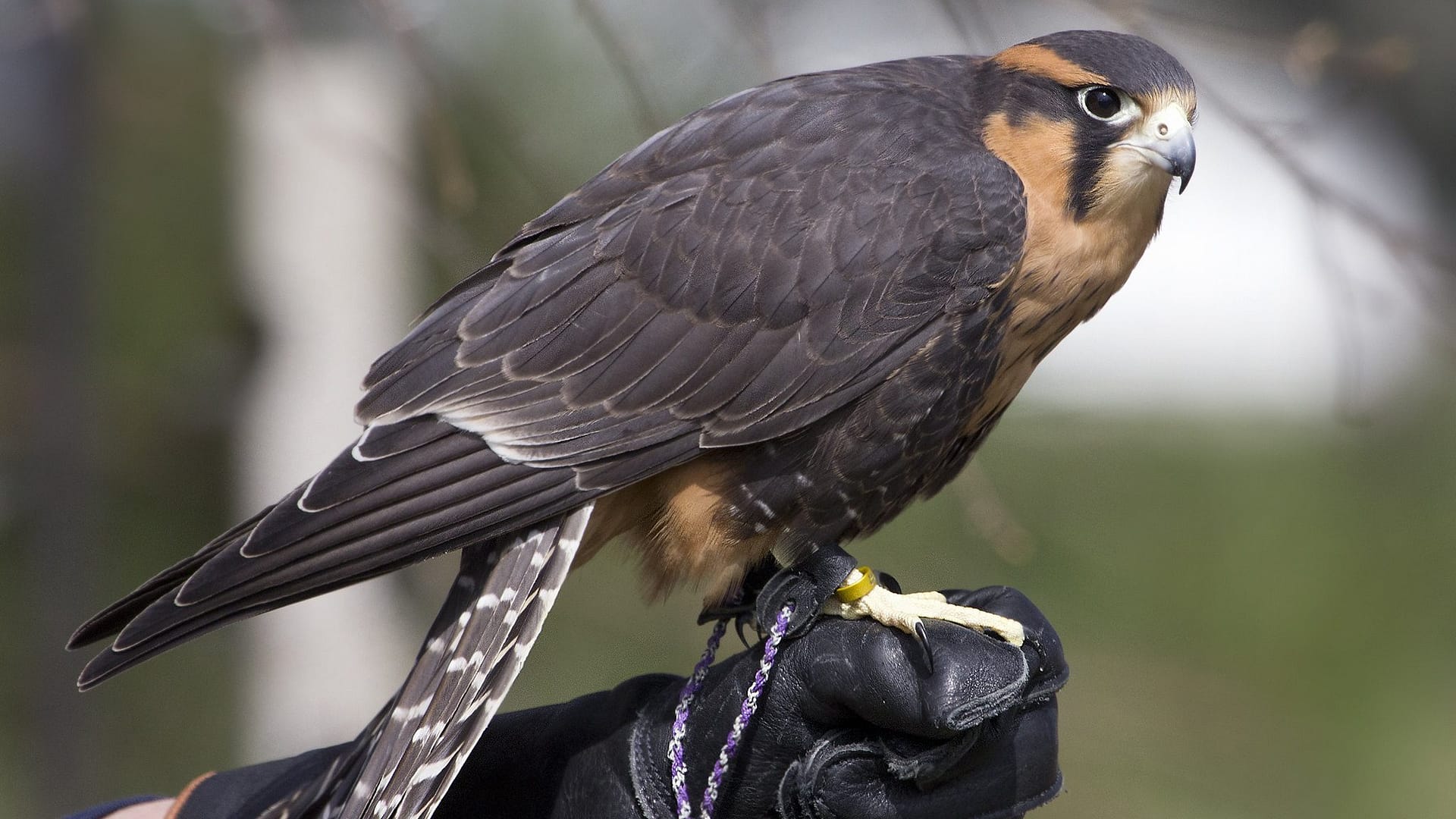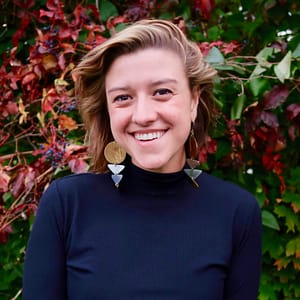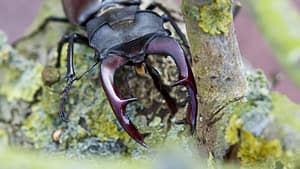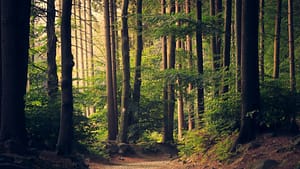It’s a brisk day in the English countryside. A man clad in wools for the damp weather walks across an open field with his dog beside him. His arm is outstretched, and perched upon his wrist is an elegant hawk. Wearing a tiny hood on his head and with bronze bells jangling at his feet, the hawk is the star of this trio. Together, they make up an expert falconry team, carrying on a tradition that has existed in England for over 1000 years.
In England, the art form of falconry has been a traditional sport for generations. It’s one of the few modern pastimes that has changed little over the past 500 years. Combining ancient techniques and a connection with nature, it’s a beautiful tradition many people know little about. Not to mention, if you’re an English speaker, you have more to thank falconry for than you may think!
In this article, we head off to the British Isles to experience the rich cultural beauty of falconry and then take a trip through history with one of the world’s most beloved playwrights, William Shakespeare.
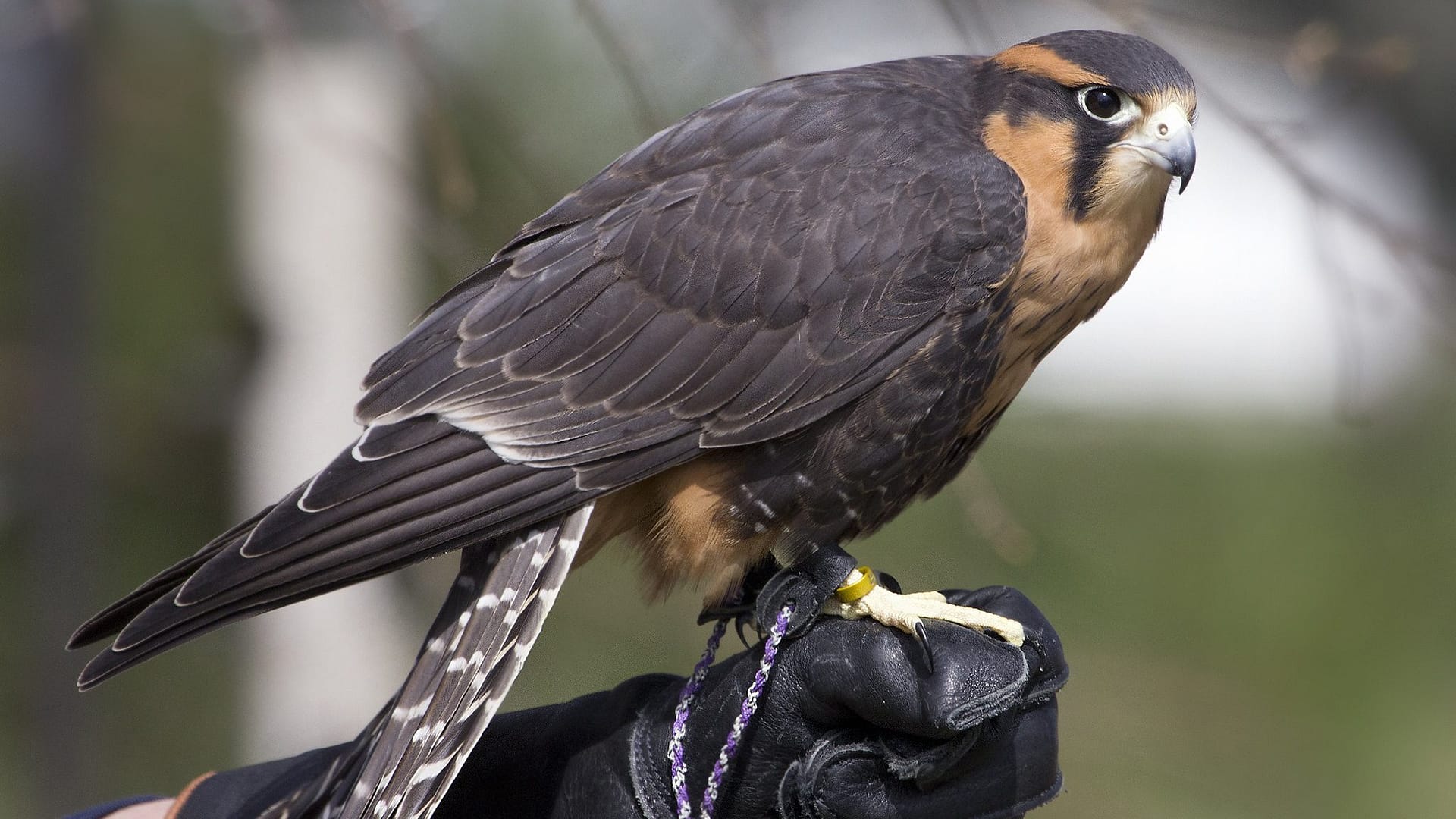
What is Falconry?
Falconry is the ancient practice of hunting with the aid of a trained bird of prey. The origins of falconry are believed to have begun in Mongolia between 4,000 and 6,000 BC. 1
In the UK, falconers work with their birds–typically falcons, hawks, and sometimes eagles–and their dogs to hunt prey. Before the widespread use of gunpowder, falconry was used by people of all social statures as a way to hunt fast-moving animals like rabbits or game birds.
The sport of falconry, or hawking as it is sometimes called, became the sport of the nobility around the 15th century. Formal rules were even set down as to what kinds of hawks or falcons people were allowed based on their social strata. As the 15th century “Boke of St. Albans” lays out:
Emperor – The Eagle, Vulture, and Merloun
King – The Ger Falcon and the Tercel of the Ger Falcon
Prince: The Falcon Gentle and the Tercel Gentle
Duke: The Falcon of the Loch
Earl: The Falcon Peregrine
Baron: The Bustard
Knight: The Sacre and the Sacret
Esquire: The Lanere and the Laneret
Lady: The Marlyon
Young Man: The Hobby
Yeoman: The Goshawk
Poor Man: The Tercell
Priest: The Sparrowhawk
Holy Water Clerk: The Musket
Knave or Servant: The Kestrel 2
Though some of the pomp and circumstance has faded away in modern falconry culture, deep respect for the power of the mighty birds of prey they work with remains. Now you are most likely to see UK falconers working with Redtailed Hawks, Harris’ Hawks or Goshawks. 3 It is still a relationship unique in the human-animal world. The falconer must approach their bird with the utmost respect, developing a bond and a trust with it.
Watching a falconer in action harkens back to something ancient.
The working relationship between humans and animals is a wonderous partnership that reminds us that we are not an all-powerful creature and that there is a remarkable beauty in embracing our partnerships with other species.
Take a look at this beautiful film from our friends at Eyes & Ears, and you’ll get a feel for why this art continues to be a tradition even to this day.
We love the work Eyes & Ears puts out! They are incredible people to work with and they were kind enough to let us feature Nobility of the Air as a part of our first reel of content for Amazing World Media. Amazing World Media is our newest EWC entity! We are bringing the amazing video content you expect to find here on Ever Widening Circles and curating it for waiting rooms, healthcare settings, and businesses.
If you want to check out more from Eyes & Ears, jump over to their Vimeo page or website!
“I feel very much a part of [the countryside]. Just another animal, with my animals, as part of that landscape.”
– Paul Manning
In recent years, falconry has been gaining in popularity in the UK. By some estimates, the sport is more popular now than it has been in nearly three centuries. 5 As Paul mentioned in the video, much of the sport remains the same. Techniques used for generations are still passed down from master falconer to apprentice, and the thrill of seeing one’s bird in flight is still a sight to behold for falconers.
Even with some newfangled technology—like GPS trackers on the birds—the connection between human, bird, dog, and landscape still seems to call modern falconers.
Falconry and Shakespeare?
Did you know if you are an English speaker, you are probably already using falconry terms from time to time?
As it turns out, William Shakespeare was quite a fan of falconry, and as a result, he used turns of phrase popular at the time that were derived from falconry in his beloved plays. As his words stood the test of time, those phrases made their way into common English. Ever been hoodwinked, or had somebody wrapped around your little finger? Maybe you were a little haggard when you woke up this morning? Well, you can thank Shakespeare and his love of falconry for that!
Take a look at some of the other words we can thank falconry for in this great short video from Great Big Story.
Great Big Story always comes through with amazing content about corners of our world you never knew existed! If you haven’t subscribed to them already or followed them on your social media, make sure you check them out on YouTube, Facebook, Twitter, or Instagram!
The Legacy of Falconry
Few of us will ever have the time to dedicate to training a bird and mastering an art form like falconry, but it is yet another amazing tradition that connects us to an earlier time. Moreover, it is a tradition that connects us to the other creatures that call this planet home.
How a Magpie Named Penguin Helped a Family Find Life after Loss
After mother and adventurer Sam Bloom became paraplegic in a sudden accident, her sense of self was erased. But just as she was losing hope in the future, a little magpie waddled into her life and changed everything!
Read Article Watch Video Listen to PodcastFalconry is one of the rare pursuits in which we are not entirely in charge. Where we are forced to work with nature and form symbiotic relationships. There is a beautiful reminder in that for all of us. It’s not often that we get to be so close to nature, and work so closely with it.
How can we find ourselves connecting more deeply more often?
Stay beautiful & keep laughing!
-Liesl

Don’t miss out on a single article!
Enjoy unlimited access to over 500 articles & podcast that give you a positive perspective on the state of the world and show you practical ways you can help.
Notes:
- Nature. “History of Falconry.” PBS, Public Broadcasting Service, 4 June 2008, www.pbs.org/wnet/nature/raptor-force-history-of-falconry/1108/. ↩
- British Bird Lovers. “The History Of Falconry.” British Bird Lovers, www.britishbirdlovers.co.uk/articles/the-history-of-falconry. ↩
- Cheshire Falconry. “About Our Birds.” Cheshire Falconry, www.cheshirefalconry.com/about-our-birds. ↩
- Eyes & Ears. “Nobility of the Air.” Vimeo, Eyes & Ears, 24 Jan. 2017, vimeo.com/200827278. ↩
- Preston, Katherine. “Roaming Southern England’s Countryside with Trained Birds of Prey.” Jungles in Paris, www.junglesinparis.com/stories/roaming-southern-england-s-countryside-with-trained-birds-of-prey. ↩
- Great Big Story. “How Falconry Shaped the English Language.” YouTube, Great Big Story, 22 May 2017, www.youtube.com/watch?v=u2UxisJLN5c. ↩


